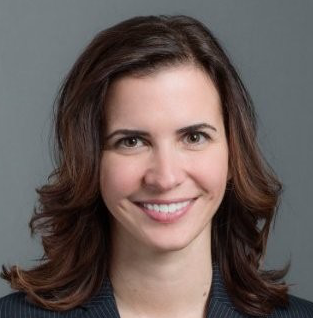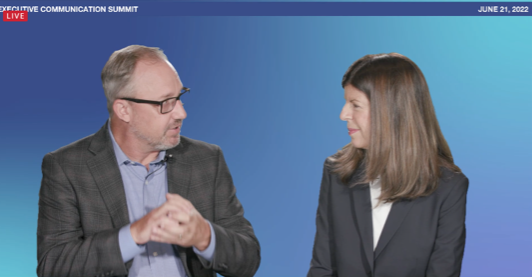Exec comms reset
January 12, 2022
Four tips for refreshing your career in 2022: from one executive communications pro to her colleagues.
The past two years have been challenging for executive communications professionals. As people turned to government, community, and business leaders for help making sense of the COVID-19 pandemic, the reckoning around racial injustice, and the climate crisis, those same leaders turned to their communications teams for help finding the right words.
It’s been important work. It’s been rewarding work. It’s also been exhausting work. A recent survey of speechwriters and executive communications professionals found that 69 percent of respondents experienced a decline in their physical or mental health during the pandemic. And burnout is affecting just about everybody.
But the start of a new year brings with it the opportunity to reset—to reorient priorities, take on new goals, and get back in touch with why you love your work.
I set out to do just this with my team at VMware last year. I created and led a thought leadership workshop across three cohorts to develop our executive communications talent and take our executives to the next level as communicators. We did this during the pandemic, in a wholly remote environment, amid all the other work we were responsible for—and it delivered results far beyond what any of us anticipated.
Here’s what I learned and how you can use it to recharge and refresh your executive communications career in 2022.
1. Move development to the top of your to-do list.
Every time I launch a new thought leadership cohort, I know how much I’m asking from my team. I can imagine their reactions when the calendar invite pops up: “ANOTHER weekly meeting? Don’t I have enough on my plate?!” But time and time again, I’ve seen my team members find value in having the opportunity to step back from their day-to-day responsibilities and look at the big picture for themselves and for their executives. They’ve told me, “This is the kind of work I’ve always wanted to do—I just never had the time to do it!”
When you’re juggling projects and deadlines, strategic work and professional development is usually what ends up on the backburner—something you can put off until you’ve got “more time.” The problem is, “more time” never seems to appear—and you end up delaying an important investment in yourself. Give yourself permission to attend that conference you’ve been eyeing, or set aside one hour per week to take a LinkedIn Learning course or do some long-term planning. Your development as a leader and a communicator is worth prioritizing—and it will energize you just when you need it.
2. Get proactive on thought leadership.
The thought leadership workshop I created for VMware always starts off the same way—not by looking at the executive, but by looking at the environment around the executive. Who are their peers? What are they talking about? What is the industry talking about? What isn’t being talked about—but should be? Answering these questions has helped break my teams out of the same old, same old thinking that can often creep into even the best executive communications programs. I encourage them to not only think about what their leaders are saying today—but what they could and should be saying tomorrow.
So much of executive communications is reactive. You take notes in meetings to capture your executive’s voice and their latest thinking. You prepare for the next interview or event keynote or email blast. These are all important parts of the job—but equally important is proactively thinking about ways to take your leader and their messaging to the next level. I challenge you to open a blank document and start writing about your industry’s hottest topic or your organization’s biggest pain point—and how your executive’s ideas are uniquely able to speak to them. This is the beginning of a truly unique thought leadership message. And it’s what will take you from being just another member of an executive’s team to being a true strategic thought partner.
3. Build a community of communicators.
As I was assembling each of my cohorts, I deliberately brought together individuals from separate lines of business who might not get a chance to interact with each other frequently. My thinking was that it would give people an opportunity to learn more about different executives and different parts of the company while they were completing the workshop. But it ended up accomplishing much more than that. My team members found a sense of community within their cohorts—connecting with colleagues who instantly and intimately understood the challenges and opportunities inherent in their jobs. It even ended up helping them feel more connected to their work and the company in the extended remote environment caused by the pandemic.
Executive communications is a unique and specialized job—which can also make it a lonely one. Even in centralized communication models, you may be the only person on your team—or inside your organization—who focuses on a specific function or executive. But that doesn’t mean you’re alone. Make time to build relationships with other communicators inside your organization and within the broader executive communications community. It’s a valuable opportunity to get a fresh perspective, learn something new, or even just commiserate with someone who knows exactly what you’re going through.
4. Make the business case.
By the end of each thought leadership cohort, my team members emerged with a toolkit for their executives: an examination of industry peers and trends, a personalized and compelling thought leadership platform, and a messaging narrative that could be used to shape speeches, blog posts, and presentations moving forward. The challenge then became taking this toolkit and getting the executives excited about it. So we pulled together some compelling data points that spoke to the importance of executive thought leadership for our company and our customers.
At VMware, we found that two pieces of information especially resonated with our leadership team. The first was a Brandfog survey that revealed that more than 9 in 10 people agree that social media is a powerful tool for building thought leadership and enhancing the credibility of C-suite executives. The second was our own discovery that unique content generated by our executives received 2900 percent more engagement on Twitter than content published by our official company account. Even the biggest social media skeptics at our company were moved by these facts—and became some of the most enthusiastic adopters of our thought leadership toolkits.
Every executive is going to have a different appetite for engaging in thought leadership work, whether it involves creating content for external stakeholders or connecting with an internal audience. Our job as executive communications professionals is to stay on top of best practices and build the case with our leaders about why authentic engagement is worth the time, effort, and sometimes even discomfort to do it well. Figure out what your executive cares about most—whether it’s attracting customers, boosting employee retention, or something else—and find the data that shows how executive communications will help move the needle.
As the new year begins, I’m getting ready to launch VMware’s fourth thought leadership cohort. Creating this workshop, developing all the talent on our executive communications team, and seeing the results we’ve delivered for our executives has been some of the most rewarding work of my career. I hope the tips I’ve shared give you some actionable ideas for taking your career to the next level this year, and I’d love to hear how it goes if you implement them. I’m also curious: what are your best tips for recharging in the new year?




